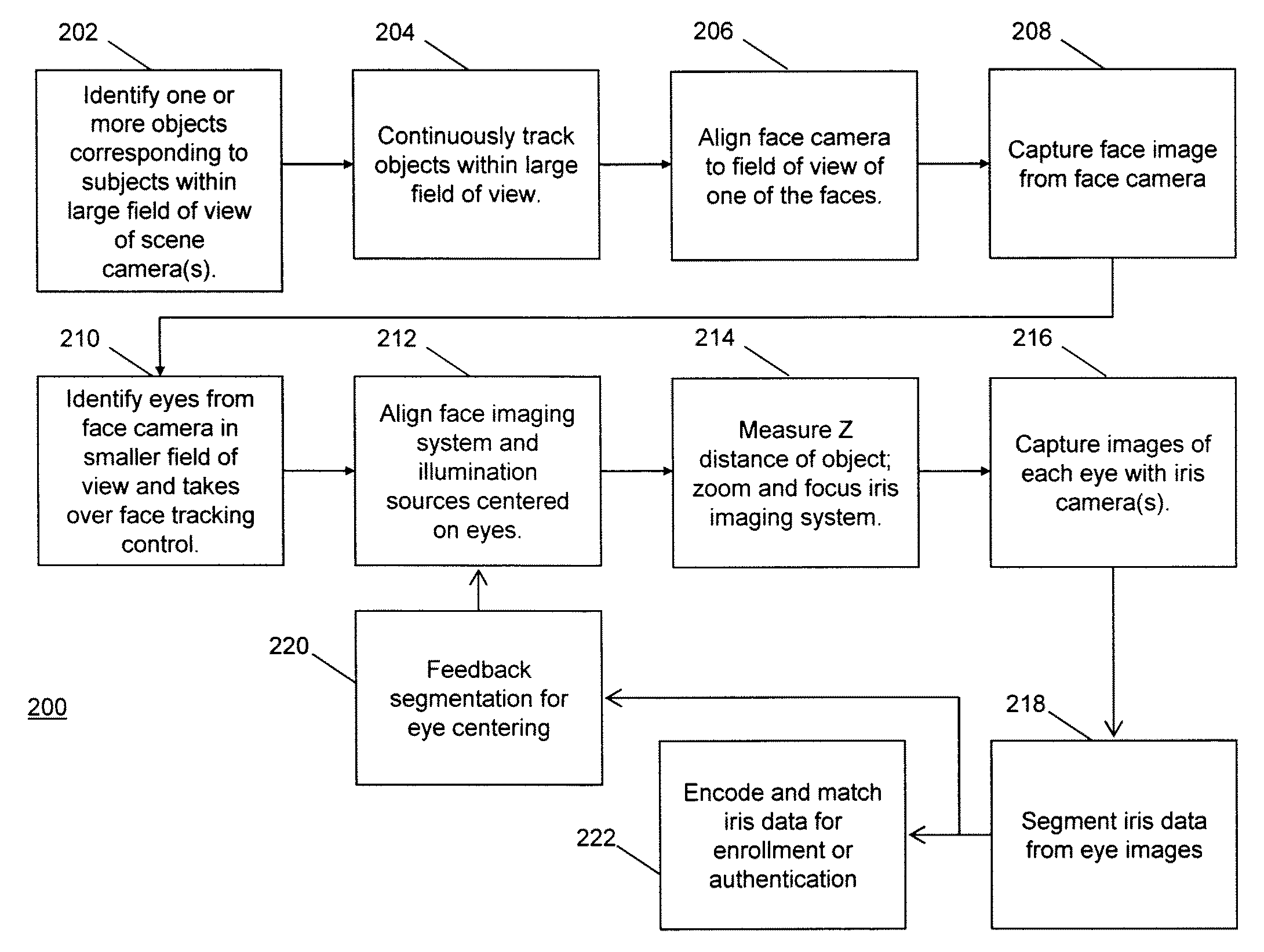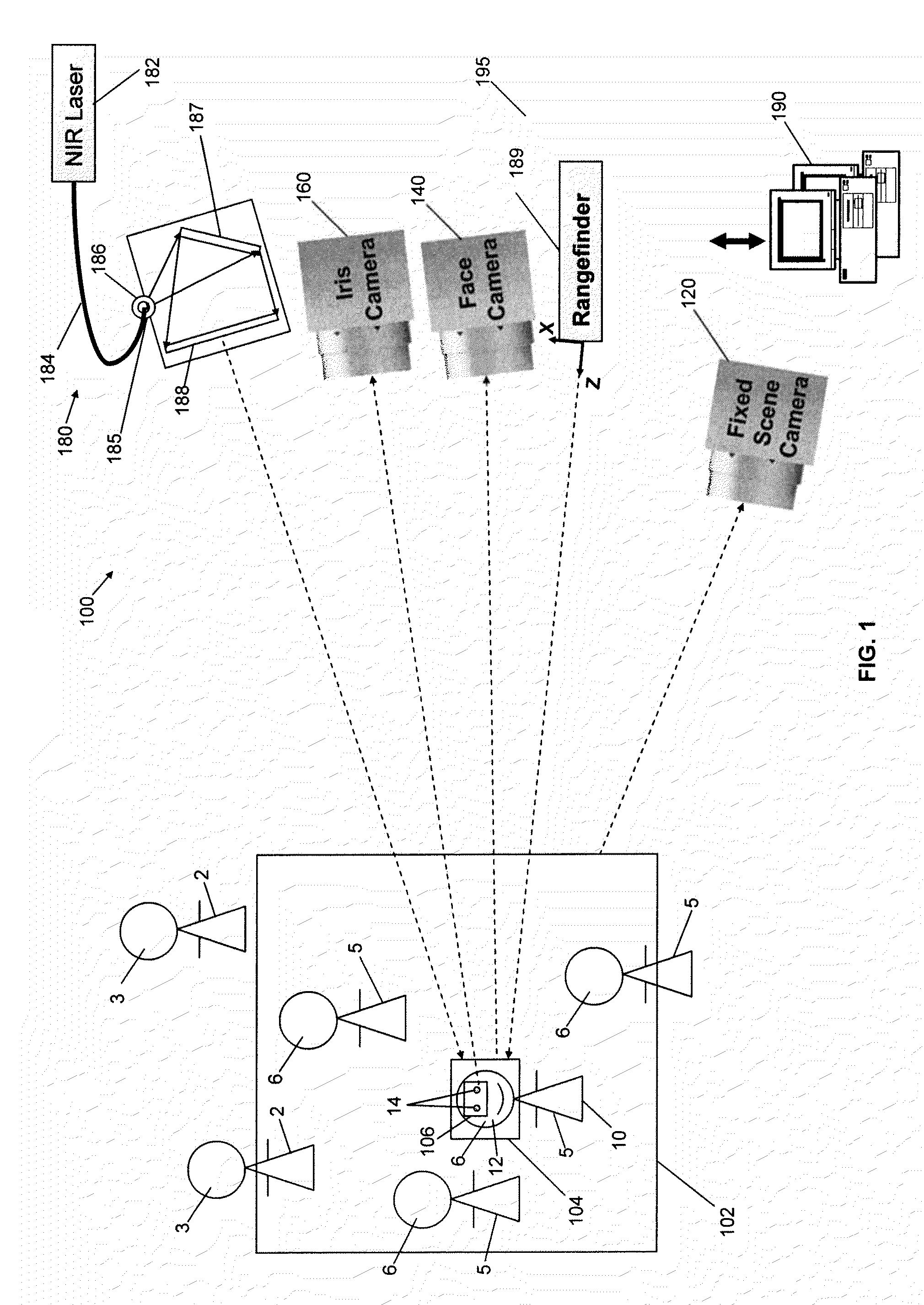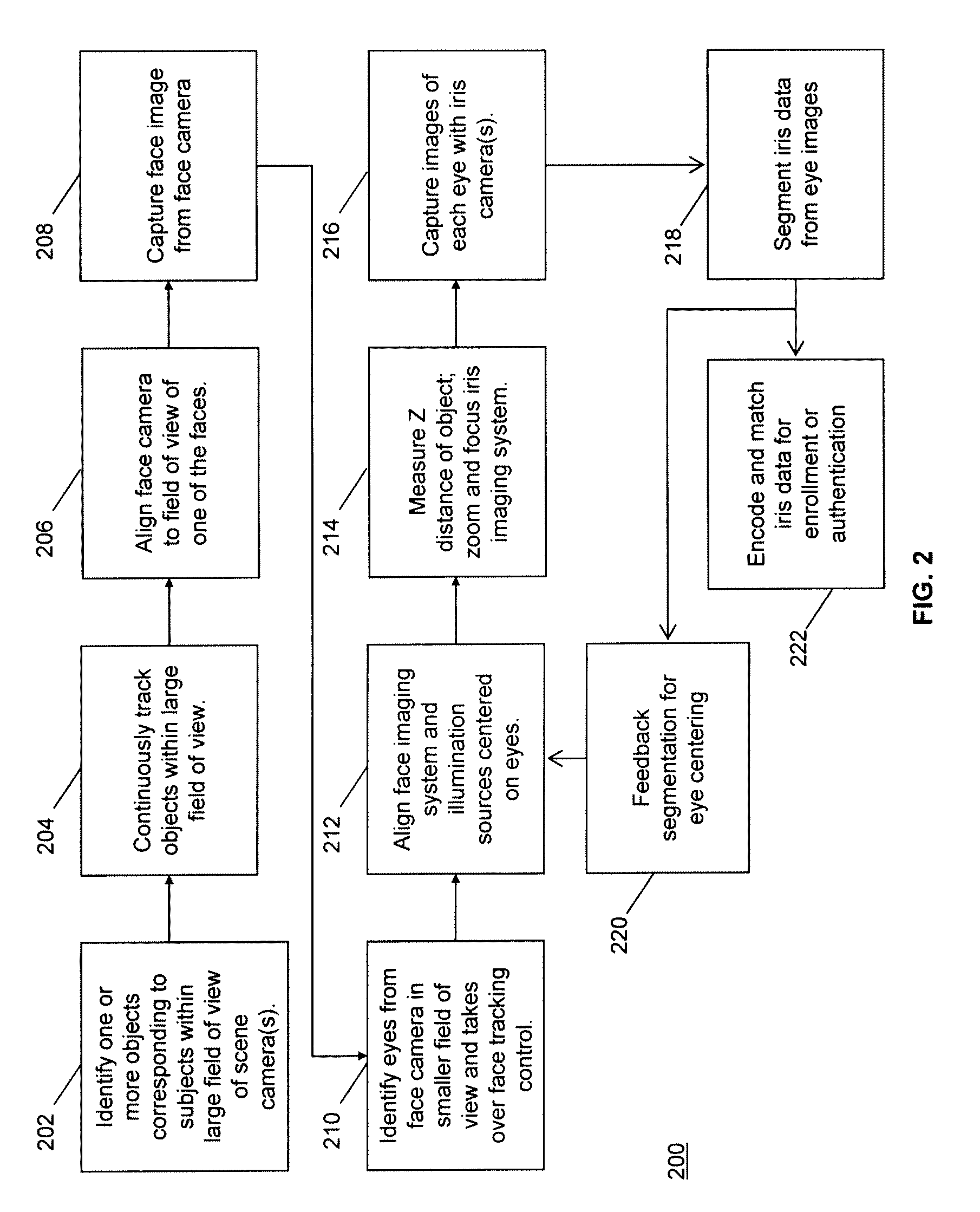Long distance multimodal biometric system and method
a biometric and multi-modal technology, applied in the field of biometric identification systems and methods, can solve the problems of inability to scale up the acquisition parameters of finger-print biometrics, inability to accurately match fingerprint biometrics, and inability to meet the needs of users, so as to achieve the effect of fewer constraints and high matching performan
- Summary
- Abstract
- Description
- Claims
- Application Information
AI Technical Summary
Benefits of technology
Problems solved by technology
Method used
Image
Examples
Embodiment Construction
[0032]Referring to FIG. 1, an embodiment of a biometric system 100 employing more than one modality is illustrated. In particular, the multimodal biometric system 100 includes three imaging systems. The first imaging system is a scene imaging system 120 for identifying one or more subjects for biometric identification from a distance. The second imaging system is a face imaging system 140 for capturing images of the face 12 of a target subject 10 from a distance. The third imaging system is an iris imaging system 160 for capturing images of each iris 14 of the target subject 10 from a distance. In some embodiments, the imaging systems 120, 140, and 160 as well as other components may be housed in a single image capture device, but the components of the biometric system 100 may house the components in any number of combinations and any number of devices.
[0033]The scene imaging system 120 may include one or more cameras that capture images based on photons with visible, near-infrared ...
PUM
 Login to View More
Login to View More Abstract
Description
Claims
Application Information
 Login to View More
Login to View More - R&D
- Intellectual Property
- Life Sciences
- Materials
- Tech Scout
- Unparalleled Data Quality
- Higher Quality Content
- 60% Fewer Hallucinations
Browse by: Latest US Patents, China's latest patents, Technical Efficacy Thesaurus, Application Domain, Technology Topic, Popular Technical Reports.
© 2025 PatSnap. All rights reserved.Legal|Privacy policy|Modern Slavery Act Transparency Statement|Sitemap|About US| Contact US: help@patsnap.com



